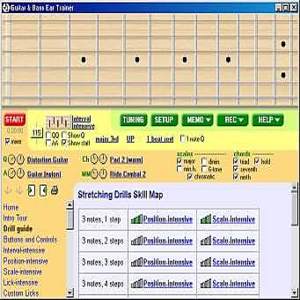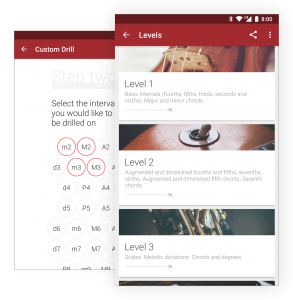
- #Ear trainer for indian music how to#
- #Ear trainer for indian music full#
- #Ear trainer for indian music pro#
You’ve got 60 seconds to answer as many correct answers as you can. A peaking (Bell) EQ filter is being used to boost a certain frequency range. Choose the right panning setting for it!Ī peaking (Bell) EQ filter is being used with negative gain values, to cut a certain frequency range and you will have to find the attenuated frequency. When an audio source will be played through a certain EQ filter setting you will have to select the right EQ setting using the EQ on/off buttons to compare the equalized and unequalized sounds.Ī sound source will be played at a certain location across the stereo field. Check out how exactly it works in the video below.īy using the ‘Original/After Gain’ buttons to compare the original and the sound after the amplitude change, select the right amplitude change in DB! You are supposed to find which sound is more compressed. You are presented with two sounds and one of them is more compressed than the other with the attack & release very short for easier recognition.
#Ear trainer for indian music how to#
This trains your ears to identify how different frequencies sound like and get a better sense of how to use an EQ. With the Balance Memory game, you will have to memorize the balance of the multi-track sound presented and set the balance accurately.Ī peaking (Bell) EQ filter is being used to boost a certain frequency range, and you will have to find the boosted frequency by using the EQ on/off buttons to compare the equalized and unequalized sounds. With, EQ Knight, you choose between two sounds and find the audio source that reflects the EQ setting that is presented to you. The games help you hone your skills on Equalization, Dynamics, Quality, Space & Time.

#Ear trainer for indian music pro#
SoundGym is now used in more than 200 countries by sound experts, bedroom producers, and educational facilities.īy making informed production and mixing decisions, and having an effective learning experience with measurable results, SoundGym Pro can make you a better producer way sooner than you think. They launched in May 2016 and are growing fast. The main belief is that our ears, our listening skills, and our knowledge come first. SoundGym knows that fun and effectiveness work together best, and when you enjoy your time you learn better.
#Ear trainer for indian music full#
The environment is friendly, competitive, personalized and full of surprises, it is a playground for the sound enthusiast. You won't get better unless you train it over and over again - It's going to take a lot of time until you will get good at it.SoundGym is a technological, personalized and gamified audio learning environment that combines curated learning programs, practical audio ear training, and a supportive community, It offers a comprehensive solution for anyone who wants to learn music production and improve audio skills. That's how I've learned it and I got better and better over time, but it's still hard for me to transcribe orchestral scores by ear for exammle, because there are so many instruments blending into each other and sometimes it can be quite hard. Play it once and try to figure out the vocal melody line, then run the whole thing again and just focus on the bass line etc. When you get better and better, you go to other instruments and songs with more instruments.ĭon't try to figure out all the instruments at once. In my opinion the piano is an easy instrument to figure out by ear. Just take a slow piano piece and try to recreate it by ear. After you got your intervals, start simple!ĭon't try to transcribe any pop songs with 20 instruments.If you know "the second note is a major third below the first one, then the next one is a perfect fifth up." it doesn't matter on which note you start the song, because no matter where you'll start, you'll always play the correct tune just in a different key.

So if you haven't perfect pitch, you won't be able to tell the exact note name or pitch of a note you've heard, but what you can train is relative pitch. This is because the interval relationship is the same in every major key for example. If you can figure out the intervals, you'll be able to play any song by ear in any key. There you get the first impressions of perfect, major, minor intervals. There are a lot of ear training apps you can train your ears with.

There will be always different methods that work better for different people. Well, there is no best way to train your ears.


 0 kommentar(er)
0 kommentar(er)
